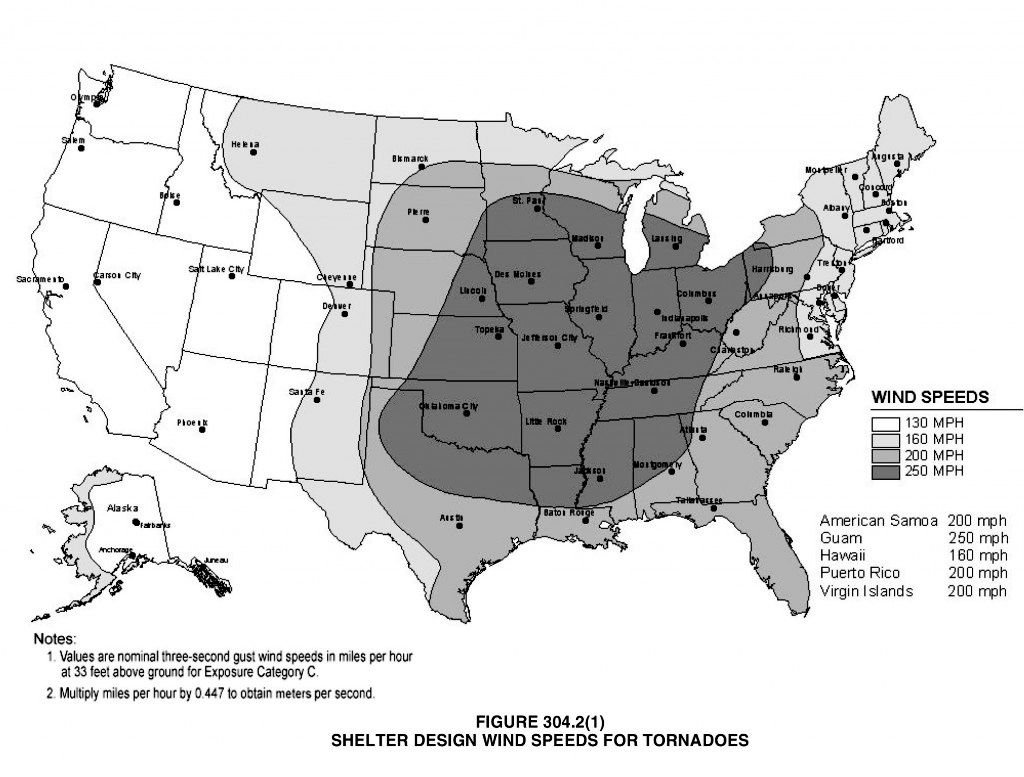Tornado Shelter | Demystifying Storm Shelters
Tornado Storm Shelter Requirements and Useful information
What are the key tornado shelter requirements?
Fundamentally, tornado shelter rooms are constructed to keep occupants safe during a severe weather event. While there are entire books written about the specific safe room requirements, a few key requirements, according to ICC-500, that you should be aware of are as follows:
- Protects from Wind and Flying Debris
- Hardened Infrastructure Required
- Occupancy Load and Duration
- Occupant Safety
Protecting can be different for Tornadoes vs. Hurricanes:
One of the key requirements that can be very different when constructing a tornado storm shelter as compared to a hurricane shelter is how it offers protection from wind and flying debris. Both a hurricane and tornado shelter room must protect against high winds and flying objects. How high and how much of an impact depends on if the safe room is designed to withstand a tornado or a hurricane. Tornadoes involve short, violent wind bursts, pressures, and impacts. Hurricanes typically come on slower, last longer, and can deliver sustained wind and flooding. So, top hurricane design wind speeds are 235 mph, while top tornado design wind speeds are 250 mph.
Impact speeds are similarly different—more intense for tornadoes, and less so for hurricanes. As such, hurricane shelters have impact test criteria of being able to withstand a 110 mph impact with a 9 lb 2x4 projectile. Tornado shelter must be able to withstand a 100 mph impact with a 15 lb 2x4 projectile.
Of note, the word “withstand” in reference to doors that protect storm shelters means that after impact, the doors may not have more than a three inch permanent deformation (or dent) that protrudes into the safe room. This is to ensure that even if projectiles are stopped, they don’t enter too far into the storm room to potentially hurt an occupant.
There are many other features that differ when constructing a tornado shelter or a hurricane shelter, download our e-book below for more information:
Download our free tornado storm shelter ebook now!
How much wind does your area need to withstand?

Wind zones are areas of the United States that get (on average) different maximum speed winds. The higher the winds, the higher the chance of a tornado or hurricane and the more damage it can do. This does not mean, however, that the surrounding areas are not of concern. Even in the 160 mph zone, tornadoes can develop and cause devastating damage to the area. 160 mph can still tear off roofs and turn over cars. These areas are generally less prepared for a storm of this magnitude, since they are less likely. When you are underprepared it can, in turn, have a greater impact on the people and the possessions in that area.
![]()
TORNADO ALLEY
It is required for an area with an increased risk of tornadoes or any state or locality that has adopted IBC 2015 or newer to have a storm shelter meeting the FEMA-361 requirements for all K-12 schools with 50 or more occupants, 911 call stations, police stations, fire, rescue and ambulance stations and more.
![]()
HURRICANE VS. TORNADOES
Pressure equalizes more during a hurricane while tornadoes come on more instantly. Storm shelters for hurricanes require you to build for duration more than intensity. Generally, tornadoes are quicker with high winds, spewing projectiles at high speeds.
![]()
STORM SHELTERS
An inside area within a building, or a separate building altogether, which is created to protect occupants from tornadoes or hurricanes. Some of the most common areas to be converted are gymnasiums, classrooms and cafeterias.





